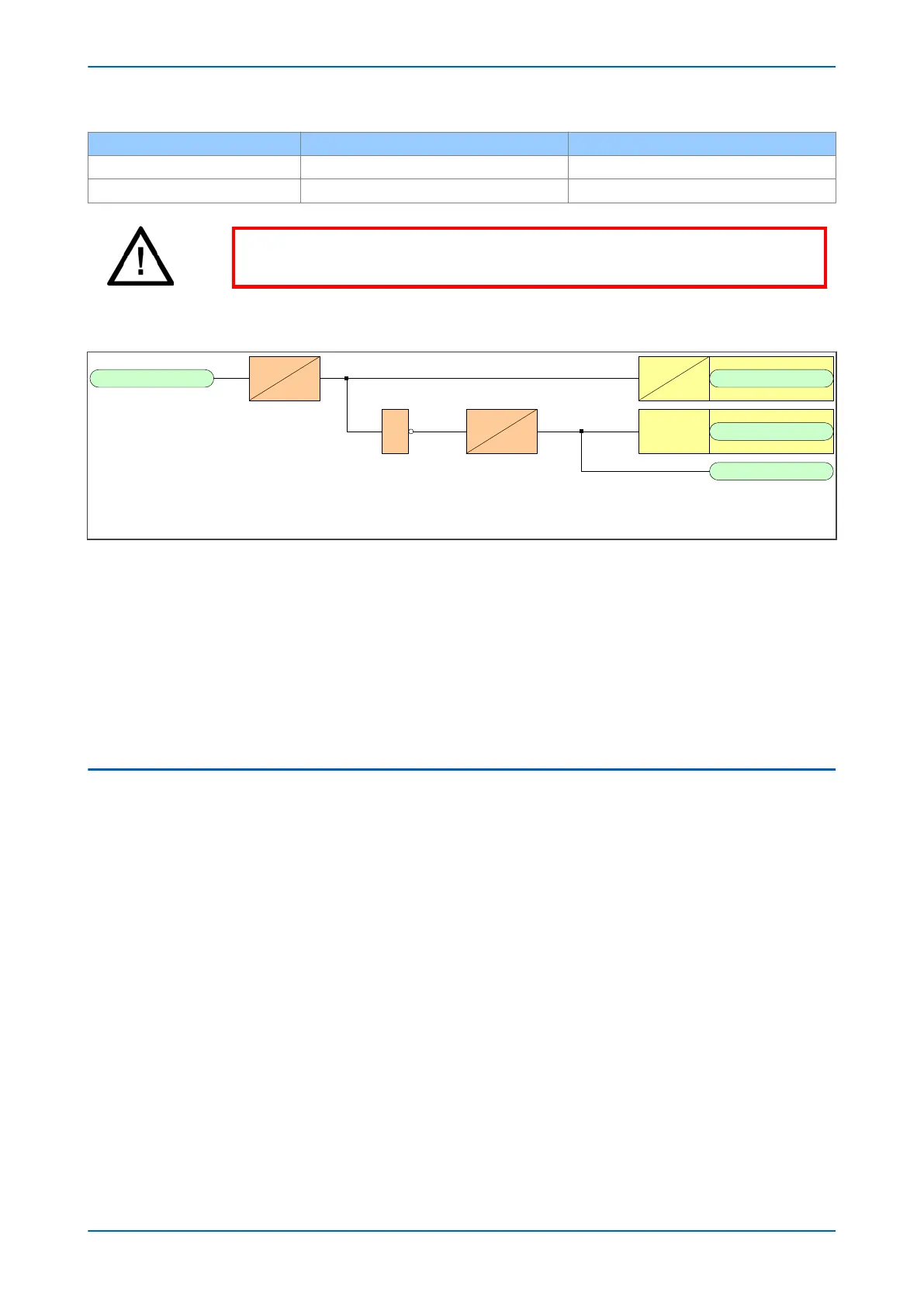Trip Circuit Voltage Opto Voltage Setting with R1 Fitted Resistor R1 (ohms)
110/125 48/54 2.7k
220/250 110/125 5.2k
Warning:
This Scheme is not compatible with T
rip Circuit voltages of less than 48 V.
5.1.2 PSL FOR TCS SCHEME 1
Opto Input
V01217
&
*Output Relay
LED
User Alarm
pickup
0
50
0
400
dropoff
Straight
0
0
Latching
*NC stands for Normally Closed.
Figure 147: PSL for TCS Scheme 1
The opto-input can be used to driv
e a Normally Closed Output Relay, which in turn can be used to drive alarm
equipment. The signal can also be inverted to drive a latching programmable LED and a user alarm DDB signal.
The DDO timer operates as soon as the opto-input is energised, but will take 400 ms to drop off/reset in the event
of a trip circuit failure. The 400 ms delay prevents a false alarm due to voltage dips caused by faults in other
circuits or during normal tripping operation when the opto-input is shorted by a self-reset trip contact. When the
timer is operated the NC (normally closed) output relay opens and the LED and user alarms are reset.
The 50 ms delay on pick-up timer prevents false LED and user alarm indications during the power up time,
following a voltage supply interruption.
5.2 TRIP CIRCUIT SUPERVISION SCHEME 2
This scheme provides supervision of the trip coil with the breaker open or closed but does not provide pre-closing
super
vision of the trip path. However, using two opto-inputs allows the IED to correctly monitor the circuit breaker
status since they are connected in series with the CB auxiliary contacts. This is achieved by assigning one opto-
input to the 52a contact and another opto-input to the 52b contact. Provided the CB Status setting in the CB
CONTROL column is set to Both 52A and 52B, the IED will correctly monitor the status of the breaker. This
scheme is also fully compatible with latched contacts as the supervision current will be maintained through the
52b contact when the trip contact is closed.
Chapter 13 - Supervision P54A/B/C/E
294 P54xMED-TM-EN-1
